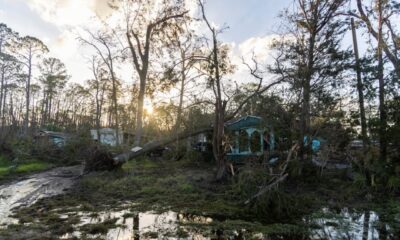Climate Change
Gaza conflict has caused major environmental damage, UN says
Gaza’s environment was already suffering from recurring conflicts, rapid urban growth, and high population density, before the most recent conflict began on Oct. 7.
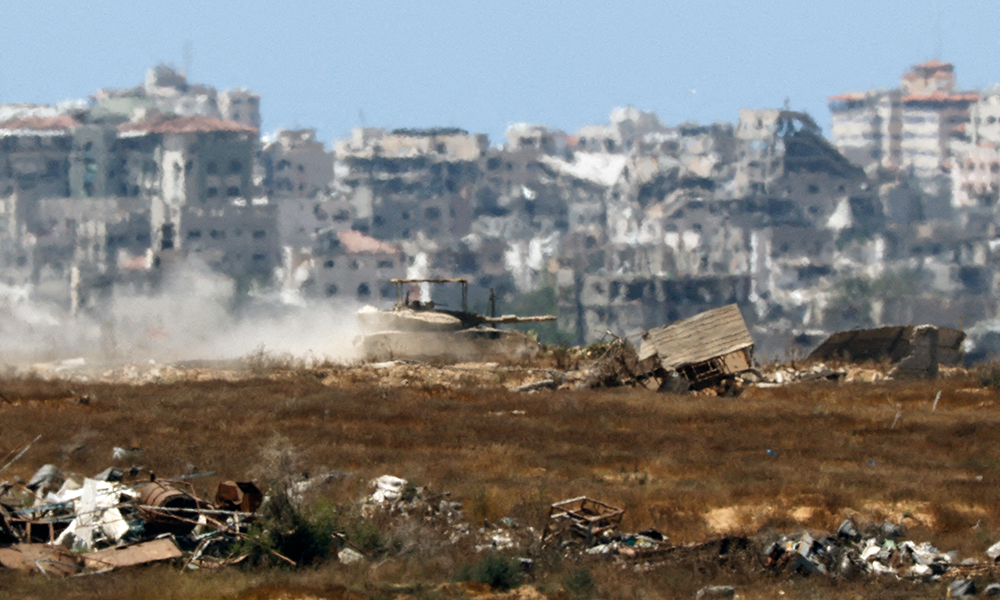
The conflict in Gaza has created unprecedented soil, water and air pollution in the region, destroying sanitation systems and leaving tons of debris from explosive devices, a United Nations report on the environmental impact of the war said on Tuesday.
The war between Israel and Hamas, the Islamist movement that controls the Gaza Strip, has swiftly reversed limited progress in improving the region's water desalination and wastewater treatment facilities, restoring the Wadi Gaza coastal wetland, and investments in solar power installations, according to a preliminary assessment, opens new tab from the U.N. Environment Programme (UNEP).
Explosive weapons have generated some 39 million tons of debris, the report said. Each square metre of the Gaza Strip is now littered with more than 107 kilograms (236 lbs) of debris. That is more than five times the debris generated during the battle for Mosul, Iraq, in 2017, the report said.
"All of this is deeply harming people's health, food security and Gaza's resilience," said UNEP Executive Director Inger Andersen.
Gaza's environment was already suffering from recurring conflicts, rapid urban growth, and high population density, before the most recent conflict began on Oct. 7.
The U.N. assessment adds to concerns about the unfolding humanitarian crisis and the environmental costs of war, with Ukraine also recording widespread ecological damage over the past two years.
"Understanding the environmental impacts of war is a grand challenge of our time," said Eoghan Darbyshire, a senior researcher at the UK-based nonprofit Conflict and Environment Observatory. "The impacts will not only be felt locally where the fighting is taking place, but may be displaced or even felt at the global scale via greenhouse gas emissions."
BASIC SANITATION SYSTEMS DESTROYED
The U.N. assessment stems from a December 2023 request from the Palestinian Environment Quality Authority for UNEP to take stock of environmental damages. UNEP is mandated to assist countries with pollution mitigation and control in areas affected by armed conflict or terrorism.
Due to security concerns and access restrictions, the U.N. used remote sensing surveys and data from Palestinian technical entities, as well as damage assessments from the World Bank, in their report. Ground measurements, however, would be critical to understand the extent of soil and water pollution, Darbyshire said.
Water, sanitation, and hygiene systems are now almost entirely defunct, the report found, with Gaza's five wastewater treatment plants shut down. Israel's long-term occupation had already posed major environmental challenges in the Palestinian territories with regards to water quality and availability, according to a 2020 report by the U.N. Development Programme.
Over 92% of water in the Gaza Strip was then deemed unfit for human consumption.
The Gaza Strip had one of the highest densities of rooftop solar panels in the world, with the U.S.-based Centre for Strategic and International Studies estimating in 2023 some 12,400 rooftop solar systems. But
Israel has since destroyed a large proportion of Gaza's burgeoning solar infrastructure, and broken panels can leak lead and heavy metal contaminants into the soil.
Since a week-long truce in November, repeated attempts to arrange a ceasefire have failed, with Hamas insisting on a permanent end to the war and full Israeli withdrawal from Gaza. Israeli Prime Minister Benjamin Netanyahu refuses to end the war before Hamas is eradicated and the hostages seized by Hamas militants during the Oct. 7 attack on southern Israel that triggered the war are freed.
Looking at the scale of environmental destruction, "it is my opinion that large areas of Gaza will not be recovered to a safe state within a generation, even with limitless finance and will," said Darbyshire. – Reuters.
Related Stories:
Israeli forces rescue four live hostages from Gaza, military says
UNSC’s ceasefire resolution an ‘initial step’ to ending Palestinian ‘genocide’: IEA
Climate Change
US southeast faces daunting task cleaning up from Helene; death toll rises
At least 3.5 million customers remained without power across five states, with authorities warning it could be several days before services were fully restored.

Authorities across a wide swath of the southeastern United States faced the daunting task on Saturday of cleaning up from Hurricane Helene, one of the most powerful to hit the country, as the death toll continued to rise.
At least 43 deaths were reported by late on Friday, and officials feared still more bodies would be discovered across several states, Reuters reported.
Helene, downgraded late on Friday to a post-tropical cyclone, continued to produce heavy rains across several states, sparking life-threatening flooding that threatened to create dam failures that could inundate entire towns.
In Florida's Pinellas County near Tampa, Sheriff Bob Gualtieri said he had never seen destruction like that which Helene wrought. "I would just describe it, having spent the last few hours out there, as a war zone," Gualtieri told a press conference.
At least 3.5 million customers remained without power across five states, with authorities warning it could be several days before services were fully restored.
Scientists say climate change contributes to fueling stronger, more destructive hurricanes.
Before moving north through Georgia and into Tennessee and the Carolinas, Helene hit Florida's Big Bend region as a powerful Category 4 hurricane on Thursday night, packing 140 mph (225 kph) winds. It left behind a chaotic landscape of overturned boats in harbors, felled trees, submerged cars and flooded streets.
Police and firefighters carried out thousands of water rescues throughout the affected states on Friday.
More than 50 people were rescued from the roof of a hospital in Unicoi County, Tennessee, about 120 miles (200 km) northeast of Knoxville, state officials said, after floodwaters swamped the rural community.
Rising waters from the Nolichucky River prevented ambulances and emergency vehicles from evacuating patients and others there, the Unicoi County Emergency Management Agency said on social media. Emergency crews in boats and helicopters were conducting rescues.
Elsewhere in Tennessee, Rob Mathis, the mayor of Cocke County, ordered the evacuation of downtown Newport because of a potential failure at the nearby Walters dam.
In western North Carolina, Rutherford County emergency officials warned residents near the Lake Lure Dam that it might fail, although they said late on Friday that failure did not appear imminent.
In nearby Buncombe County, landslides forced interstates 40 and 26 to close, the county said on X.
Climate Change
Myanmar’s flooding death toll rises to 113, state media reports
State media also reported that five dams, four pagodas, and more than 65,000 houses were destroyed by the flooding.
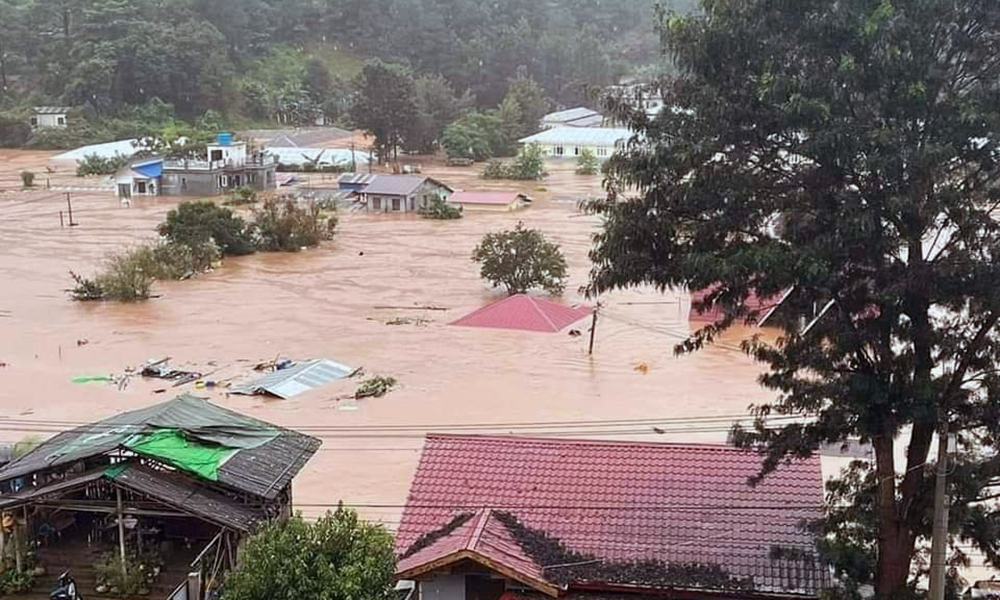
Myanmar's death toll from floods rose to at least 113 as of Saturday evening, the country's military government said on Sunday, following heavy rains brought on by Typhoon Yagi that has caused havoc across parts of Southeast Asia, Reuters reported.
At least 320,000 people have been displaced and 64 were still missing, government spokesman Zaw Min Tun said, according to a late-night bulletin on state-run MRTV.
"The government is conducting a rescue and rehabilitation mission," he said.
Adverse weather from Typhoon Yagi, the strongest storm to hit Asia this year, has killed hundreds of people in Vietnam and Thailand, and flood waters from swollen rivers have inundated cities in both countries.
The flooding in Myanmar began last Monday, with at least 74 people killed by Friday, based on state media reports.
Myanmar has been in turmoil since a military coup in February 2021 and violence has engulfed large parts of the country, read the report.
The United Nations Office for the Coordination of Humanitarian Affairs (OCHA) said the storm's rains mainly affected the capital Naypyitaw, as well as the Mandalay, Magway, and Bago regions, along with eastern and southern Shan state, Mon, Kayah and Kayin states.
"Central Myanmar is currently the hardest hit, with numerous rivers and creeks flowing down from Shan hills," the OCHA said.
Reports of more deaths and landslides have emerged, but gathering information has been challenging due to damaged infrastructure and downed phone and internet lines.
State media also reported that five dams, four pagodas, and more than 65,000 houses were destroyed by the flooding.
About a third of Myanmar's 55 million people require humanitarian assistance but many aid agencies, such as the International Committee of the Red Cross, cannot operate in many areas because of access restrictions and security risks, Reuters reported.
Climate Change
Typhoon Yagi leaves dozens dead and causes major damage in Vietnam
Thirty five people have died and 24 are missing, mostly because of landslides and floods triggered by the typhoon
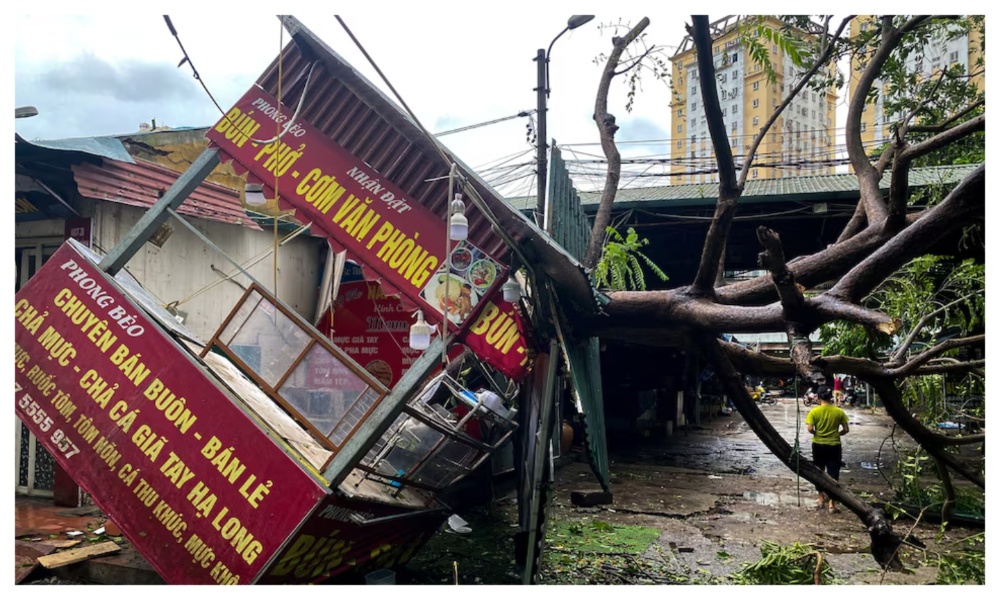
Typhoon Yagi, Asia's most powerful storm this year, left dozens dead in northern Vietnam and widespread damage as it churned westwards, preliminary government estimates showed on Monday, while the weather agency warned of more floods and landslides.
Thirty five people have died and 24 are missing, mostly because of landslides and floods triggered by the typhoon, Vietnam's disaster management agency said.
The typhoon made landfall on Saturday on Vietnam's northeastern coast, home to large manufacturing operations of domestic and foreign companies, and was downgraded to a tropical depression on Sunday by the meteorological agency, Reuters reported.
It cut power to millions of households and companies, flooded highways, disrupted telecommunications networks, downed a medium-sized bridge and thousands of trees and brought to a halt economic activity in many industrial hubs.
Managers and workers at industrial parks and factories in Haiphong, a coastal city of two million, said on Monday they had no electricity and were trying to salvage equipment from rain in plants whose metal sheets roofing had been blown away.
"Everyone is scrambling to make sites safe and stocks dry," said Bruno Jaspaert, head of DEEP C industrial zones, which host plants from more than 150 investors in Haiphong and the neighboring province of Quang Ninh.
"Lots of damages," said Hong Sun, the chairman of the South Korean business association in Vietnam when asked about the typhoon's impact on Korean factories in coastal areas.
The weather agency warned of more floods and landslides, noting that rainfall ranged between 208 mm and 433 mm in several parts of the northern region over the past 24 hours.
State-run power provider EVN said that more than 5.7 million customers lost power during the weekend as dozens of power lines were broken, but electricity was restored on Monday to nearly 75% of those affected.
-

 Latest News4 days ago
Latest News4 days agoWFP helps over 6,000 poor families in Kunduz
-

 Sport5 days ago
Sport5 days agoFrance accused of ‘match-fixing’ over dismal performance against Iran at Futsal World Cup
-

 Sport4 days ago
Sport4 days agoFutsal World Cup: Afghanistan going in to game against Paraguay ‘to win’
-
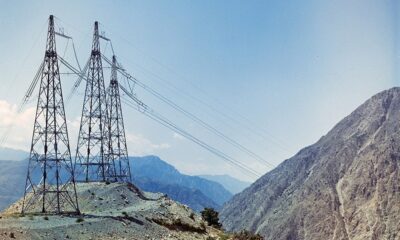
 Latest News4 days ago
Latest News4 days agoTajikistan’s electricity exports to Afghanistan and Uzbekistan drop against last year
-

 Regional5 days ago
Regional5 days agoIran’s Guards ban communications devices after strike on Hezbollah
-
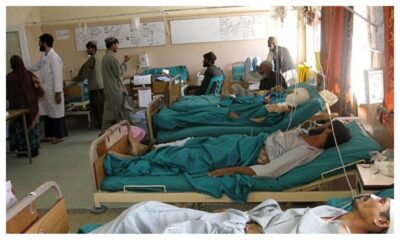
 Health4 days ago
Health4 days agoConcerns raised over outbreak of mystery disease in Afghanistan’s Parwan province
-

 World5 days ago
World5 days agoBiden designates UAE as a second major defense partner after India
-

 Latest News3 days ago
Latest News3 days agoIranian president stresses need for cooperation with Tajikistan over Afghanistan












